Why Won’t My Dog Look at Me? (How BAD Is This?)
For humans, eye contact is a vital element of communication. It represents that you are invested in a conversation, and are listening to and want to engage with others. In fact, if someone avoids eye contact with you, it can be unnerving and cause mistrust or suspicion.
However, the same doesn’t ring true for our canine buddies, who have been known to look everywhere but AT you! For first-time pet parents, this can be quite disheartening and might make them wonder if they are doing something wrong.
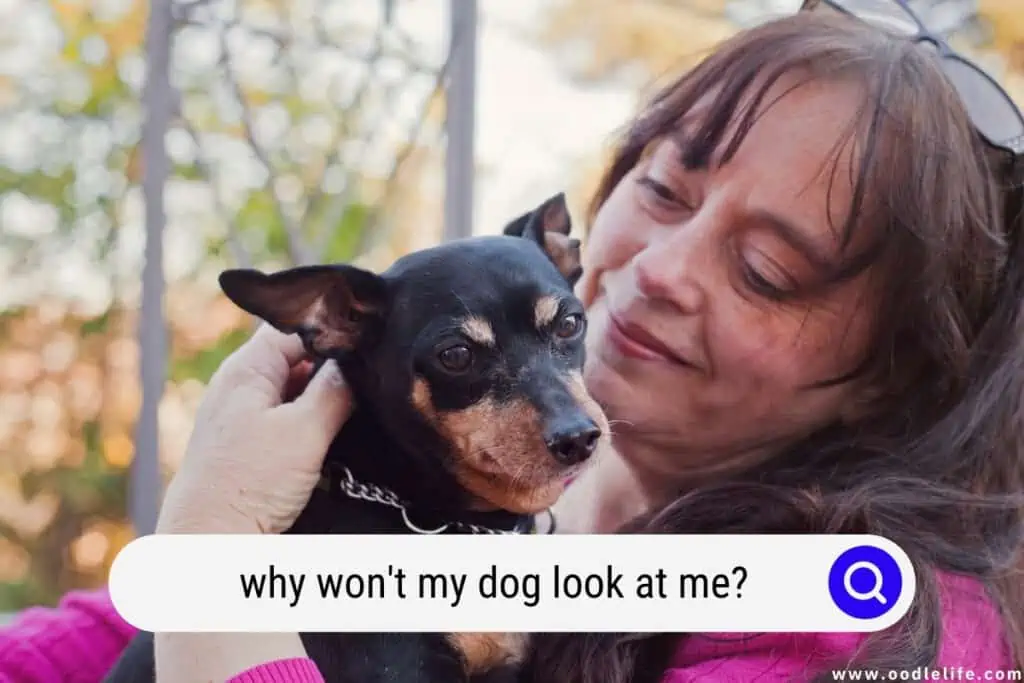
In dogs, gazing and staring for a longer period is often a prelude to initiating an attack or challenge. As a result, dogs will try to pacify the aggressor by turning away. It is a primal response that prevents any potential conflict.
This article will talk you through the diverse reasons why dogs find it difficult to make eye contact and whether it is a major issue. Understanding these factors will help you see how it is normal behavior amongst dogs!
Reasons Why Dogs Avoid Eye Contact
The majority of pet parents love gazing at their pets and enjoy interacting with them. However, a dog might not be comfortable making eye contact, especially when they are untrained.
Dogs typically avoid eye contact because it is part of their instincts. In addition, your furry friend will tend to avoid direct eye contact as it is a sign of threat, impending conflict, or aggressive behavior.
1. Dogs see eye contact as an uncomfortable challenge
If you’ve ever been on a safari, you know that it’s important to follow the rule of not staring wild animals in the eye. It’s not just a matter of being polite – staring can be seen as a challenge, and if the animal feels threatened, it may attack. Even if the animal is not aggressive, staring can still be stressful for them.
Humans consider eye contact as a sign of confidence, respect, and strength. However, for most animals, direct eye contact is often seen as a challenge, which is why we are cautioned to not stare a wild animal in the eyes if we chance across them along a trail.
The majority of domestic dogs will swiftly look away from your stare in the interest of evading any direct challenge. If your furry friend has less socialization, they might be naturally assertive and might look at you for longer. When interacting with your canine, it is best to avoid staring too much into your dog’s eye.
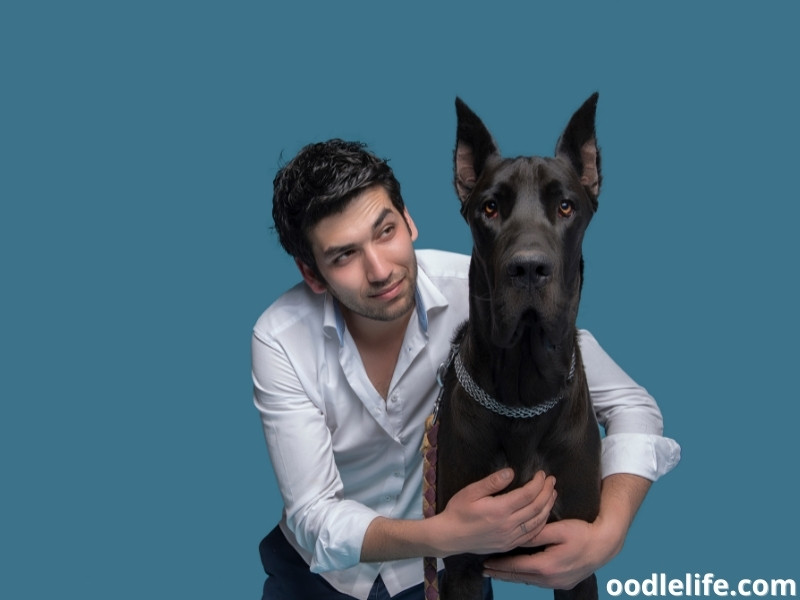
2. Indicates submission and respect
When pet parents and their dog enters into a stare-down, it only ends in two ways. This confrontation can either escalate into a conflict or the dog might avert its gaze. If your furry companion looks away, it indicates submissiveness.
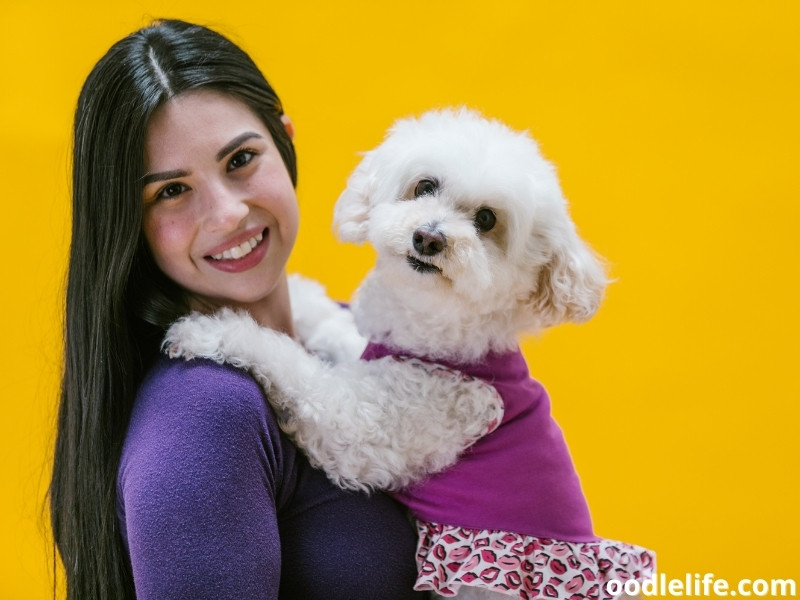
3. Lack of early socialization
Another explanation for the avoidance of eye contact is on the simpler side. Maybe they just haven’t learned how to make eye contact or that eye contact is a good thing. Most of the pups that are domesticated learn that eye contact is positive behavior and is usually followed by treats, petting, or a walk.
On the contrary, dogs that grow up unsocialized outdoors will avoid this uncomfortable eye contact because they lack proper socialization skills. When a pup is not properly socialized at a young age, it implies that they haven’t learned to be trusting or open around people or other dogs.
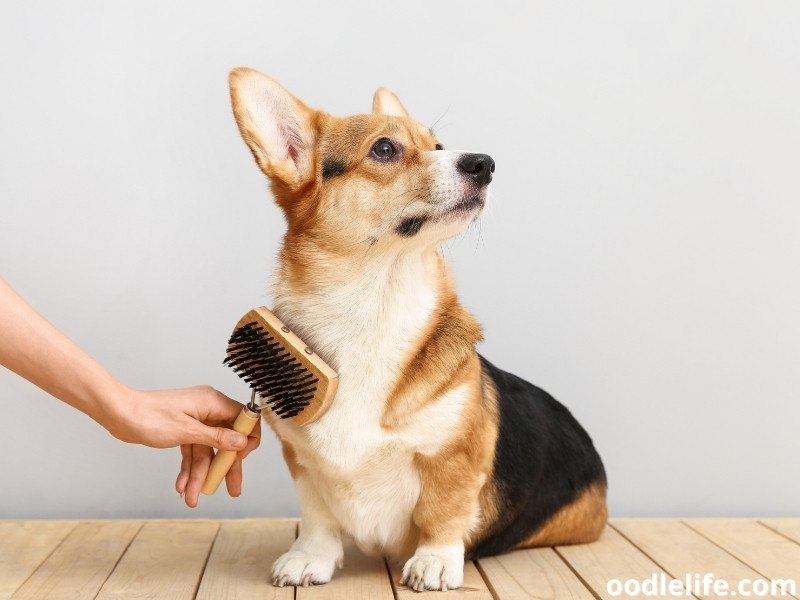
4. Fear
When humans make eye contact, it is known to release the “love hormone called oxytocin.” Likewise, research suggests that a similar hormone is released when a human and a dog make eye contact. Therefore, your dog will feel the love while making eye contact if they are comfortable with you and are accustomed to looking into your eyes.
However, if the bond between a pet parent and their dog is weak, eye contact will seem like a sign of challenge rather than love, and constantly staring your dog down may be getting him more fearful of you as he sees this as a perpetual challenge.
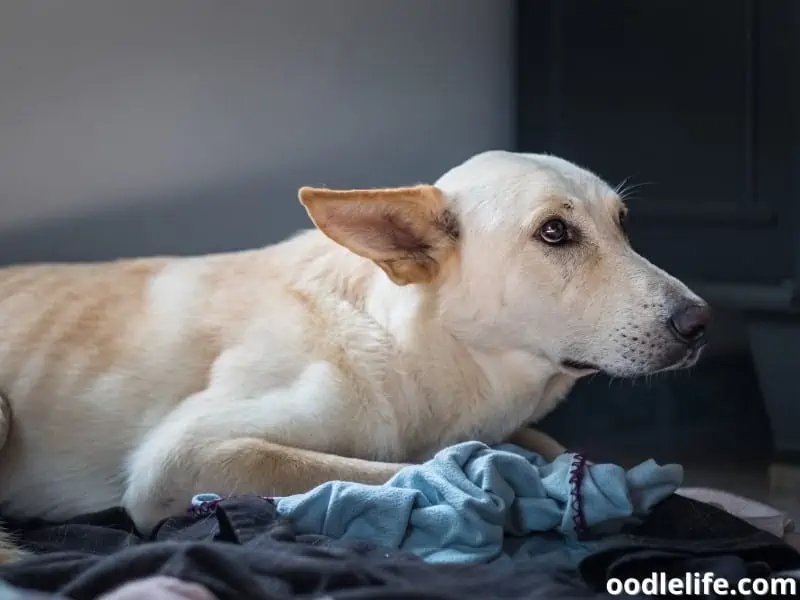
Is Guilt Making Your Dog Avoid Eye Contact?
Dogs are naughty and mischievous creatures who are always getting into trouble. Their fun-loving personalities can frequently bring trouble and form a sense of guilt when they are aware of their wrongdoings. Furthermore, they will begin fearing the consequences and back down from you staring at them.
If you have been struggling to know why your dog is not making eye contact, then a possible explanation is that they are guilty. In this case, your pup will be aware of what went wrong and the dog will give you guilty looks. These gestures are a blend of avoiding eye contact and other behavior that may seem unconventional like moving to another room.
A pup who is embarrassed about doing something is just reacting to its guardian’s anger or disappointment. When they avoid eye contact, your pup is basically trying to diffuse the tension in the environment.
Guilt can take a toll on anyone’s personality and dogs are no exception. When a pup starts to feel guilty, pet parents will notice a change in behavior patterns. For example, if you catch your dog chewing a shoe, they will instantly detach eye contact to avoid feeling guilty.
You must remember that dogs will still find it uncomfortable to make eye contact even with proper socialization.
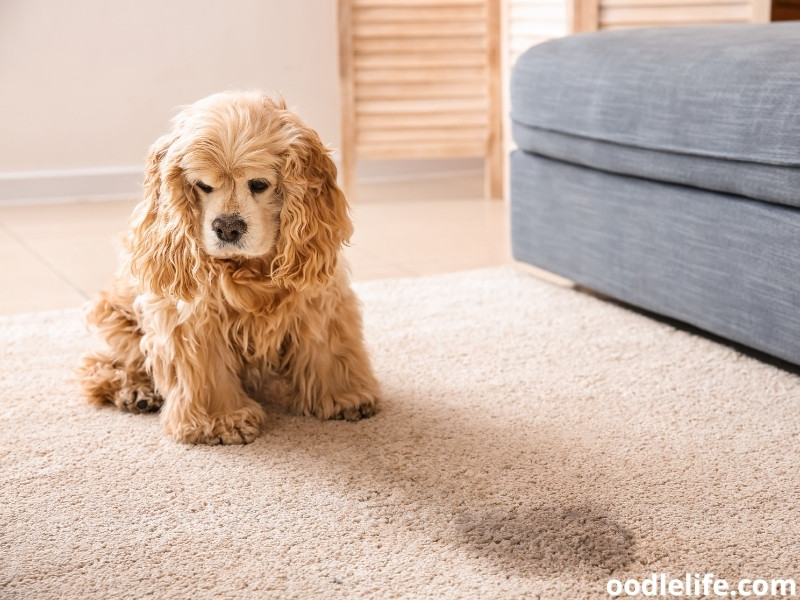
Should You Worry If Your Dog Avoids Eye Contact?
In most cases, there is nothing to worry about when a dog does not make eye contact. As mentioned before, avoiding eye contact is a normal part of a dog’s social structure. It is particularly true when a dog does not have a strong relationship with its guardian.
Even though a weak bond is a conceivable explanation, dogs that have a strong bond might prefer avoiding eye contact. If this is the case, it is good to accept your dog does not feel comfortable and avoid forcing this behavior.
The avoidance of eye contact is worrisome in some situations. For instance, if your dog is avoiding eye contact because they are afraid of you. This implies that your dog does not have a happy relationship with you.
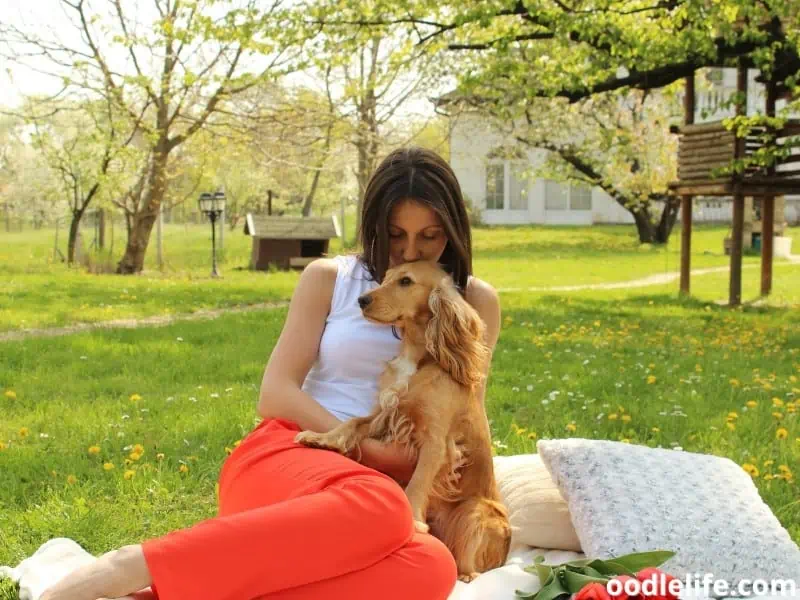
In addition, when your dog won’t look at you, it can become a challenge as your furry friend tends to follow body language more than words. As a result, it can become difficult to train your pup as your pup will take in progress slowly.
A critical scenario is when a dog is under constant submission. In this situation, your four-legged friend will be constantly in a state of fear and panic. For starters, this is not a healthy way to live and can result in more severe behavioral problems down the road.
Furthermore, communicating with your pup will become harder as getting your point across is difficult when there is an absence of eye contact. If you frequently find yourself frustrated and getting angry with your dog, the struggle to preserve a healthy relationship will be stronger.
In addition, training is difficult when your dog refuses to look at you, hampering your progress. Lastly, the situation can be bad when your dog keeps hiding their face while grooming. It is virtually impossible to clean out the tearstain, trim hair around the eyes, or wash your pup’s face if it keeps turning around and hiding its face.
Fortunately, there is still hope. If your pup does not like making eye contact or is shy, they can still be trained to make eye contact!
Can You Teach Your Dog To Make Eye Contact?
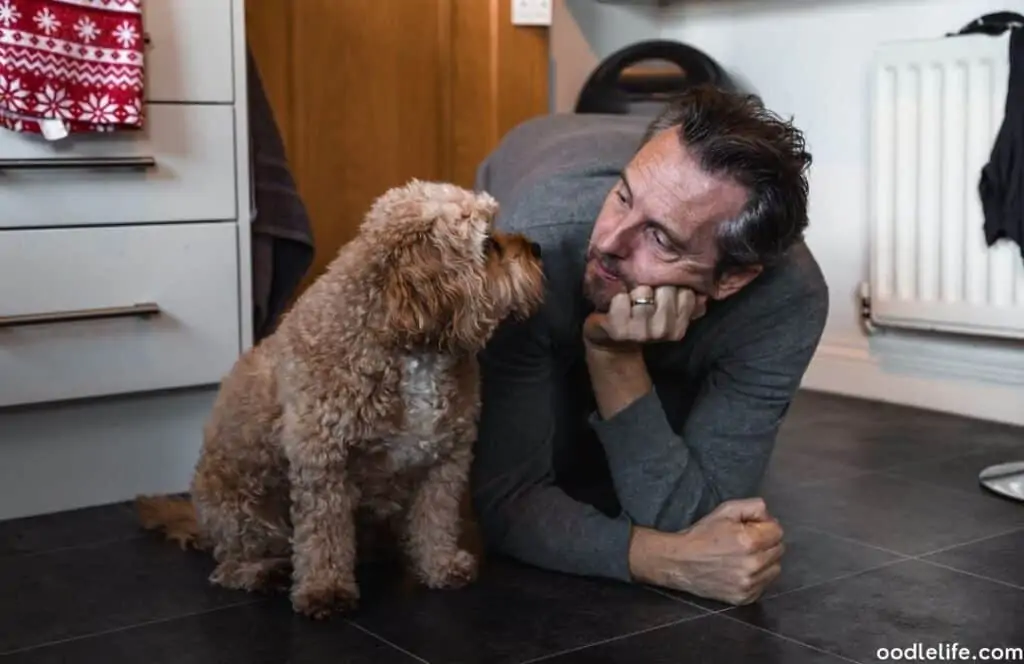
Teaching a dog how to make eye contact is possible, however, it is best to train them as a puppy. Dogs learn quickly and more effectively at a younger age. It is essential to remember that you need to be careful throughout the eye contact training journey.
You might need to get professional help or support from a specialist if eye contact is met with aggression or hostility. If your dog is open to your training, it will be a straightforward activity to teach.
You can train the “watch me” command with lots of patience and consistency. Simply tell your dog to watch you, wait patiently until he does, then immediately mark the behavior with a “yes!” and give a treat. Do this several times throughout the day, and soon your dog will realize that direct eye contact doesn’t necessarily mean a bad thing.
Final Thoughts
Dogs might be our best friends, but they still are animals and most animals perceive a direct and prolonged stare as a challenge or a prelude to conflict. Don’t be offended or hurt if your dog refuses to look at you. It is often a simple reason like your dog is showing you respect and acknowledging you as the alpha of the pack.
However, if you want more eye contact, training “watch me” is a simple, straightforward matter that can be a lot of fun if your dog is up for it!